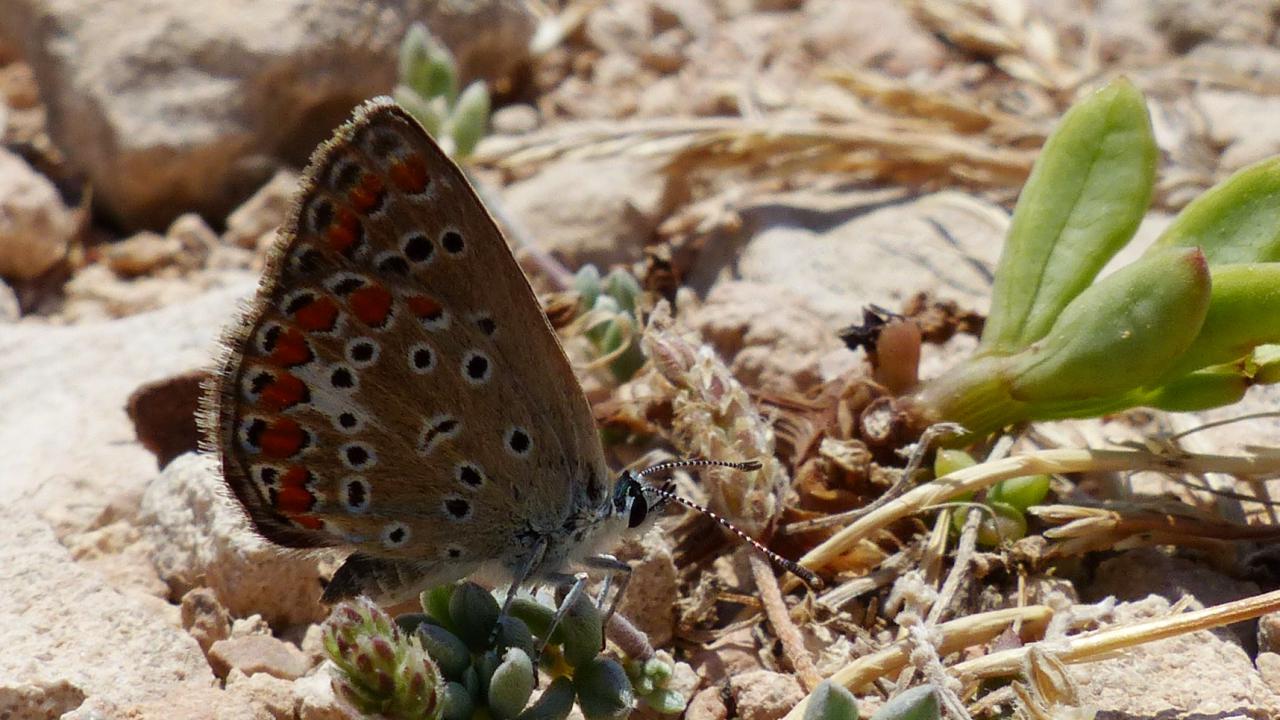Description:
The Southern Common Blue (Polyommatus celina) was formerly considered a subspecies of the Common Blue (Polyommatus icarus) but, based on DNA analysis, has recently (2010) been split into a separate species.
It is extremely similar to Polyommatus icarus and almost impossible to distinguish them in the field.
Polyommatus celina replaces Polyommatus icarus in Southern Spain, North Africa and the Canaries.
The African individuals of Polyommatus celina usually show a broader black upperside wing margin and a series of black marginal dots on the hindwings, but the southern Spain species are much less pronounced.
Polyommatus celina occurs on several west Mediterranean islands, as well as large parts of the Iberian Peninsula, where it occurs in parapatry with Polyommatus icarus.
Although Polyommatus icarus and Polyommatus celina were able to colonize most islands, they seem to completely exclude each other.
For instance, Polyommatus icarus occurs on Corsica, Elba, Capri and Crete and Polyommatus celina occurs on Sardinia, Sicily, Lipari, the Balearics (Mallorca, Menorca, Ibiza, Formentera and some minor islands) and Fuerteventura.
Both P. icarus and P. celina can easily be confused with the Brown Argus (Aricia agestis).
The best way to tell the difference is to look at the underside of the wings, and more particularly the pattern of the spots.
There are two distinguishing features:
1. P. icarus/celina has a spot (the "cell spot") on the underside of the forewing that is absent in the Brown Argus;
2. The three spots on the leading edge of the hindwing are more or less horizontally aligned in P. icarus/celina whereas in the Brown Argus two of the three spots are vertically aligned, almost forming a "hockey stick" with the third spot.
In southern European countries P. icarus/celina is easily confused with the Adonis Blue (Polyommatus bellargus).
Both look very similar but the Adonis Blue has a very characteristic black chequering on the white margins (fringes) of its wings, where the veins cut the margin (in Dutch: "geblokte franje").
Ibiza, Spain, 18 June 2017


